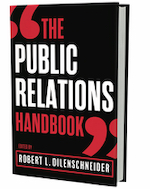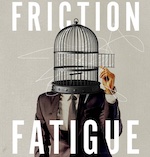From the fall of 1986 through the spring of 1987 the news was dominated by high-profile ethical scandals. The Reagan White House was fighting allegations it had sold arms to Iran and diverted the proceeds to Nicaraguan Contras. Wall Street financier Ivan Boesky was indicted for insider trading. Evangelists Jimmy Swaggart and Jim Bakker were tangled in adultery scandals.
In the spring of 1987 the race to succeed President Ronald Reagan was beginning. The odds-on favorite for the Democratic nomination was Colorado Senator Gary Hart. In 1984 Hart won the New Hampshire primary in nearly upset former Vice President Walter Mondale, the party’s eventual nominee.
As is well known Hart’s quest for the 1988 nomination would end before it began in earnest.
In All the Truth is Out, Matt Bai, Yahoo News national political correspondent, revisits this watershed moment for politics and the media and presents it in a clearer focus than most people remember.
Hart had achieved a sort of celebrity status after managing George McGovern’s 1972 presidential campaign. Following his election to the Senate, he gained a reputation as a loner and an intellectual.
During his tenure in the Senate, he was dogged by rumors of infidelity. He and his wife separated twice. On one of those occasions, he stayed with Washington Post reporter Bob Woodward. His marital problems were common knowledge among his colleagues and Congressional reporters, yet they never printed a word about it.
According to Bai, adultery was considered a minor vice, rather than a career-ending offense. Other politicians were known for the same behavior.
In the spring of 1987, an anonymous phone call to Tom Fiedler, an investigative reporter with The Miami Herald, set off a chain of events that would change the way journalists cover the private lives of public figures.
Hart was accused of engaging in an affair with actress-model Donna Rice. Photos eventually emerged of Rice sitting on Hart’s lap aboard a yacht aptly named “Monkey Business.”
Bai deftly recreates the events that led to Hart’s downfall. Following the anonymous phone call, Fiedler, another Herald reporter and a photographer staked out Hart’s Capitol Hill townhouse and confronted Hart. The situation plays out like a bad TV detective drama, yet results in an explosive front-page story in the Herald.
Bai notes that with the advent of the fax machine and cell phone, the Herald story was able to become a national sensation.
It was also the first election cycle in which satellite trucks were dispatched to far-flung locations to stake out the players in an ongoing drama.
In one of the book’s amusing anecdotes, veteran Democratic operative Joe Trippi, who was beginning his career on Hart’s campaign recalled being hassled by a reporter from the syndicated show A Current Affair. He recalled saying: “They have a show just for that?”
One of the popular myths of the Hart saga is that, in response to rumors of womanizing, he issued a blanket challenge to the media to “follow me around.” Bai explains that this line came from a New York Times Magazine profile of Hart by E.J. Dionne, now a nationally syndicated columnist.
The public often wonders why he would issue such a challenge. Bai reveals the timing of this quote’s publication relative to the Miami Herald’s story and it becomes clear that the press was already in pursuit of Hart and had to engage in an internal debate over how to handle their findings.
The book also mentions that the infamous photos of Hart and Rice that graced the cover of the National Enquirer did not cause Hart to withdraw from the presidential race. In fact, they were published after his exit from the race.
Readers who remember this seminal moment will appreciate Bai’s research and the resulting clarity. Bai also had extensive access to Hart and his wife Lee, who are still married. Bai appears to have a great deal of admiration for Hart and it shows in his writing.
The book’s greatest strength is Bai’s keen analysis of the shifting mores of the public and the media and how they have affected the coverage and perception of political campaigns. He mentions that one of the worst effects of this episode is that politicians who can survive these scandals are rewarded, yet they often have very little to show in the way of policy accomplishments.
The book has received well-deserved praise including being named one of the Top 100 Books of 2014 by Amazon.com.
In the introduction, Bai tells of conversations with author and journalist Richard Ben Cramer, whose book What It Takes broke new ground in reporting on presidential campaigns. Cramer advised Bai to tell people the story they need to hear, not what they want to hear.
All the Truth is Out is a story that will show readers how a hard line was crossed by the media.
* * *
Kevin P. McVicker is Account Supervisor with Shirley & Banister Public Affairs in Alexandria, Va.


 Time correspondent Simon Shuster’s “The Showman” demonstrates how Ukraine president Volodymyr Zelensky’s masterful knowledge of PR tactics and the power of propaganda transformed him from comedian into a respected world leader.
Time correspondent Simon Shuster’s “The Showman” demonstrates how Ukraine president Volodymyr Zelensky’s masterful knowledge of PR tactics and the power of propaganda transformed him from comedian into a respected world leader. Iuliia Mendel, who served as press secretary for Ukraine president Volodymyr Zelensky from 2019 to 2021, will release a book called “The Fight Of Our Lives” in September, published by Simon & Schuster’s One Signal Publishers.
Iuliia Mendel, who served as press secretary for Ukraine president Volodymyr Zelensky from 2019 to 2021, will release a book called “The Fight Of Our Lives” in September, published by Simon & Schuster’s One Signal Publishers. Robert Dilenschneider, former CEO of Hill and Knowlton, is releasing the fifth edition of The Public Relations Handbook on Feb. 15.
Robert Dilenschneider, former CEO of Hill and Knowlton, is releasing the fifth edition of The Public Relations Handbook on Feb. 15.  Big Advertising may be down for the count, but the power of marketing lives on. That’s the big takeaway from Paul Dyer’s “Friction Fatigue,” a look at what advertising’s downward spiral means for “future-focused brands."
Big Advertising may be down for the count, but the power of marketing lives on. That’s the big takeaway from Paul Dyer’s “Friction Fatigue,” a look at what advertising’s downward spiral means for “future-focused brands." Sabrina Horn, the high-tech PR guru who sold her Horn Group to Finn Partners in 2015, has published “Make It, Don’t Fake It.”
Sabrina Horn, the high-tech PR guru who sold her Horn Group to Finn Partners in 2015, has published “Make It, Don’t Fake It.”


 Have a comment? Send it to
Have a comment? Send it to 
No comments have been submitted for this story yet.